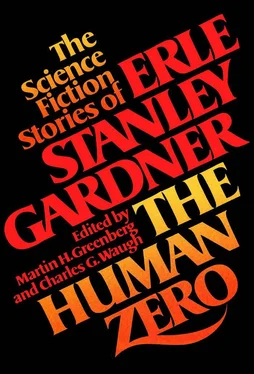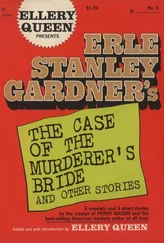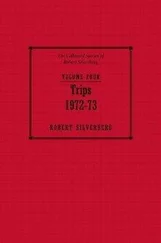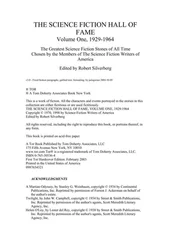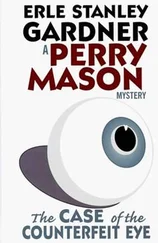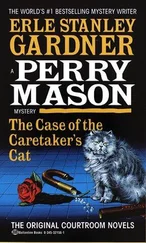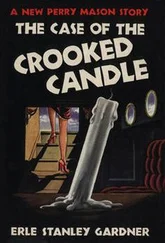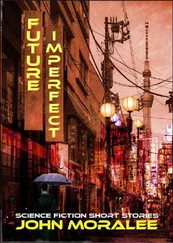Third, he possessed a mind which was both analytical and creative. As he did with the plot wheel, he was able to reduce complex matters to simple elements and then to utilize this information in innovative ways. He realized that to succeed in mass markets he had to appeal to the tired worker, the traveler looking to kill time, and the typical organization-bound individual. So he used rapid action, conflict, and drama to grip attention, and he sustained interest by appealing to his readers’ desire to see ordinary guys with some extraordinary qualities achieve justice by successfully fighting crime, chicanery, or red tape. Fourth, he was not the type of person to turn down good advice about how to improve his work. He realized that continued sales would depend on his books being well crafted. Therefore, criticisms from his secretaries and editors were listened to attentively. He often groused about both the comments and the commenter, especially on questions of time element or pace in a story. But he usually recognized good advice and took it when it was offered. Finally, although his books were written swiftly, they were often rewritten several times before they appeared in final form. Besides being responsive to the suggestions of others, he often initiated rewrites himself. He wanted each book in a series to be better than the ones before, and, until a novel got into print, he would keep turning it over and over in his mind to see if he could think of how rewriting might improve it.
[2] For a summary of his life, including some of his methods of working, see Dorothy B. Hughes, Erle Stanley Gardner: The Case of the Real Perry Mason (New York: William Morrow and Company, 1978).
As Freeman Lewis remarked about him in a letter to The New York Times :
Erle had a right to be proud of his skills as a writer. They were real and hard-earned. It often seemed to me that he operated as a professional in an area inhabited largely by amateurs. And it also often seemed to me that his books should have been reviewed by sports columnists rather than bookish people, for Erle had the kinds of learned and applied skills that sports fans understand and cherish but which book reviewers often are too pretentious to appreciate...
He was mostly given bad marks or simply overlooked by “literary” critics and he resented it, though he seldom said so. But once, in a drive from Palm Springs to Temecula, he gave the most lucid lecture on how to write readable stories, how to plot, how to select and depict believable characters, etc., that I have ever heard. He was a very serious student of the craft of writing fiction and many of those who dismissed his talents would benefit from a serious study of his practices. [3] Such a study has now been published: Francis L. and Roberta B. Fugate, Secrets of the Worlds Best-Selling Writer: The Storytelling Techniques of Erle Stanley Gardner (New York: William Morrow and Company, 1980).
Particularly interesting are the nearly six hundred novelettes and short stories Mr. Gardner produced early in his career. They were not only his training ground; they also display immediately his storytelling gift. The majority are series stories, featuring protagonists such as Ed Jenkins (a phantom crook), Lester Leith (a philanthropic type who fleeces crooks), Senor Lobo (a professional soldier of fortune), Bob Zane (an old prospector), Speed Dash (a human fly with a photographic memory), Bob Larkin (a juggler), and El Paisano (who can see in the dark). Both the Jenkins and Leith series comprise approximately seventy stories, and fourteen other series range from five to twenty-seven stories each. Most of this work is of the same quality that readers have come to expect from Mr. Gardner, and it often reveals additional dimensions of his writing ability. For example, besides rapid pace and crime, the Whispering Sand series weaves in romance and hauntingly lyrical descriptions of our western deserts. Surprisingly, however, only about six percent of these shorter works have ever been reprinted. The Human Zero collection is the first of what we hope will be a number of collections that will once again make this important work of Erle Stanley Gardner available to his millions of fans.
Mr. Gardner possessed many of the characteristics of the typical science-fiction fan: a feeling of not fitting in as an adolescent, an avid curiosity, a high intelligence, a great propensity for and enjoyment of arguing with people, and a tendency to alternate periods of solitude with periods of multiple companionship. [4] Charles G. Waugh and David Schroeder, “Here’s Looking at You Kids: A Profile of Science Fiction Fans,” Anthro-Tech: A Journal of Speculative Anthropology. Fall, 1978, pp. 12–19. Copies may be obtained from Dr. Darlene Thomas, Lockhaven State College, Lock-haven, PA 17745, for $1.00.
Who knows, had he been born fifteen years later, he might have encountered Astounding ’s editorial genius, John W. Campbell, Jr., and ended up a science-fiction writer. But at the time Mr. Gardner began writing, no science-fiction magazines existed, and because of his background in law he quite naturally moved into producing detective fiction.
However, between the years of 1928 and 1932 he did produce seven science-fiction and fantasy stories for Argosy, and these provide us with a fascinating glimpse of the writer he might have chosen to be had circumstances been different.
The title story of this collection, “The Human Zero,” is both a who-done-it and a locked-room mystery. A man is killed in a locked room, and both his body and his murderer disappear. So Sid Rodney, star detective, tries to avoid his own murder as he figures out who the criminal is and how the chilling crime was committed. The story exemplifies Mr. Gardner’s philosophy of having “characters who start from scratch and sprint the whole darned way to a goal line.”
“Rain Magic,” the first to be published, is somewhat reminiscent of Edgar Rice Burroughs. It recounts the African adventures of a young shanghaied sailor who jumps ship. Told in very vivid first-person style, it involves love, intelligent ants, a monkey man, and a ledge of solid gold. The story is a strange one, but a prefatory note said that the essentials had been told to the author by an old desert prospector. Initially, Mr. Gardner thought “it was one gosh-awful lie,” but upon subsequent checking on the locale, he found every fact given to him by the old man that could be verified was accurate.
“Monkey Eyes” is similar in flavor to some of Richard Harding Davis’s work. Set in India, it centers around kidnapping, revenge, and a grotesque scientific experiment. An aerial dogfight, ceremonies at a lost temple, and an interestingly shaded villain are still other highlights of this story.
“The Sky’s the Limit” is an interplanetary tale of a trip to Venus. Using the idea of an antigravity drive which H. G. Wells had popularized in The First Men in the Moon , Mr. Gardner mixes crime and adventure with a delightful narration of the spaceship’s test run and an accurate description of what scientists thought Venus was like in the late 1920’s.
“A Year in a Day” takes the idea of invisibility through acceleration that H. G. Wells popularized in “The New Accelerator” and applies it to the framework of the crime story. The vivid descriptions of the invisibility effect compare favorably with similar attempts by Wells and by John D. MacDonald in The Girl, The Gold Watch, and Everything .
“The Man with Pin-Point Eyes” is a powerful adventure story of reincarnation and lost gold. As fresh as if it had just been ripped from the typewriter, its western setting is very similar to the Whispering Sand series which will be reprinted in a collection to follow soon after the present science-fiction volume.
Читать дальше
